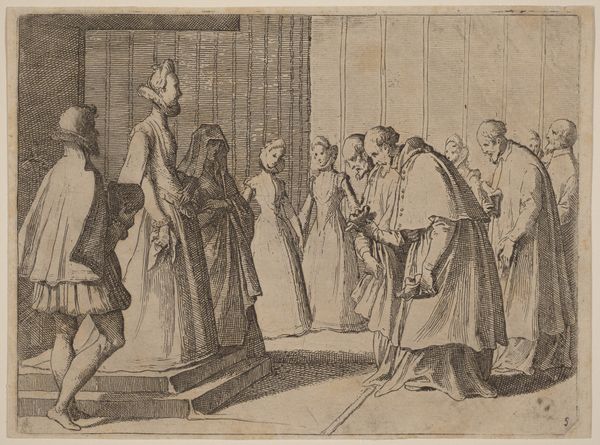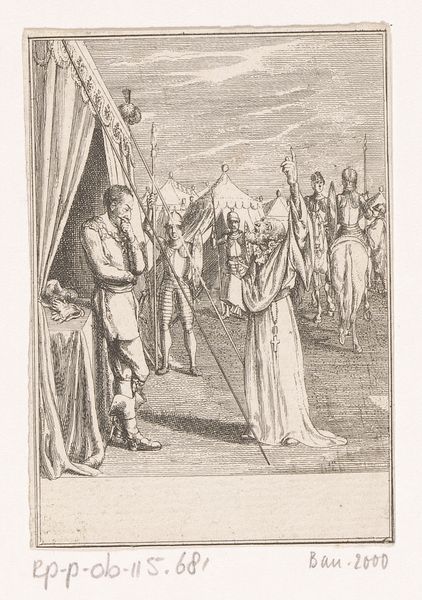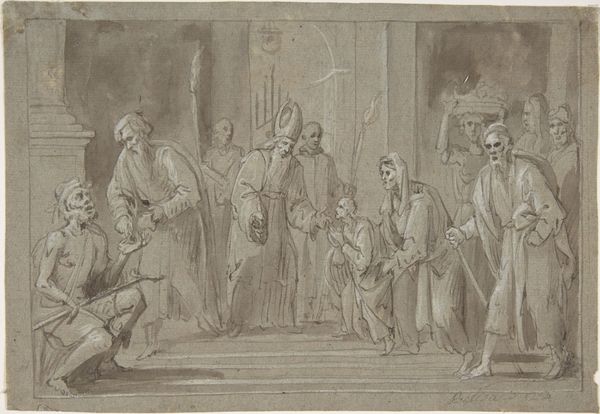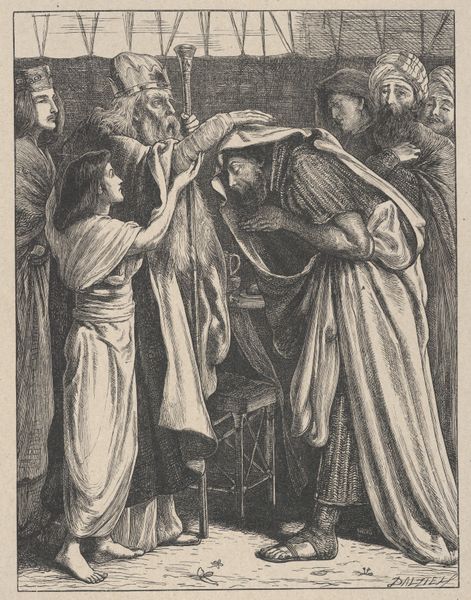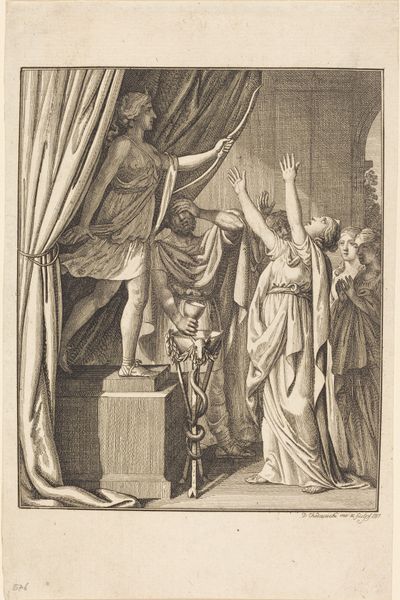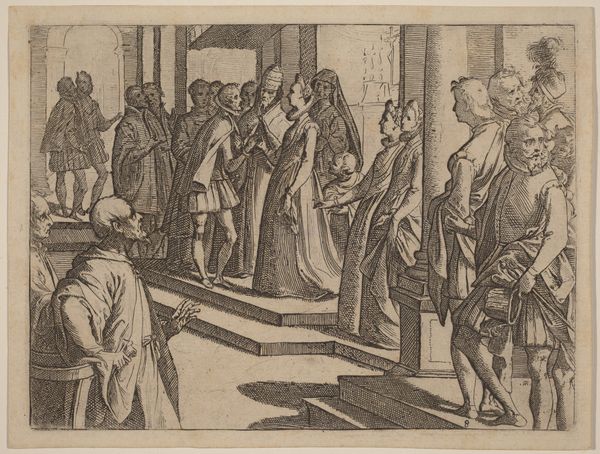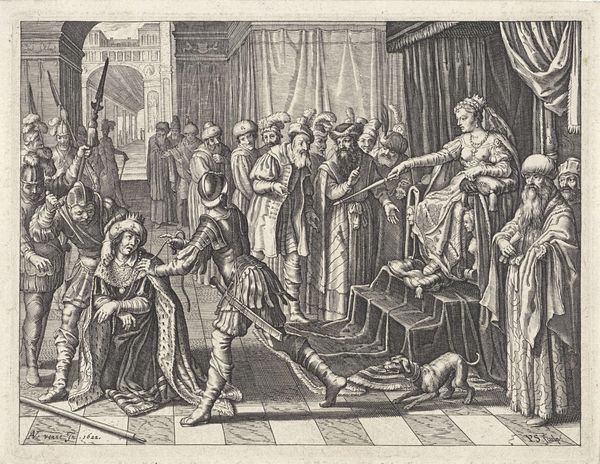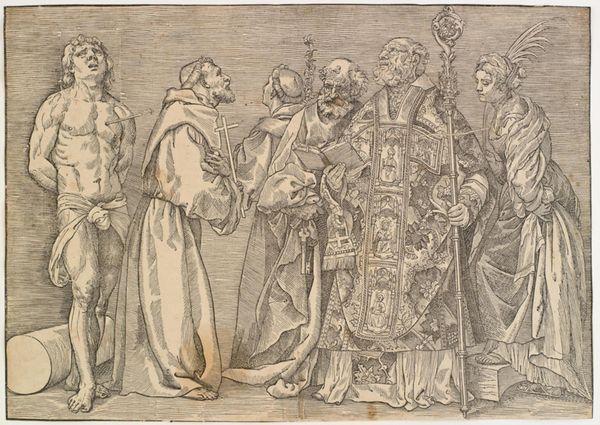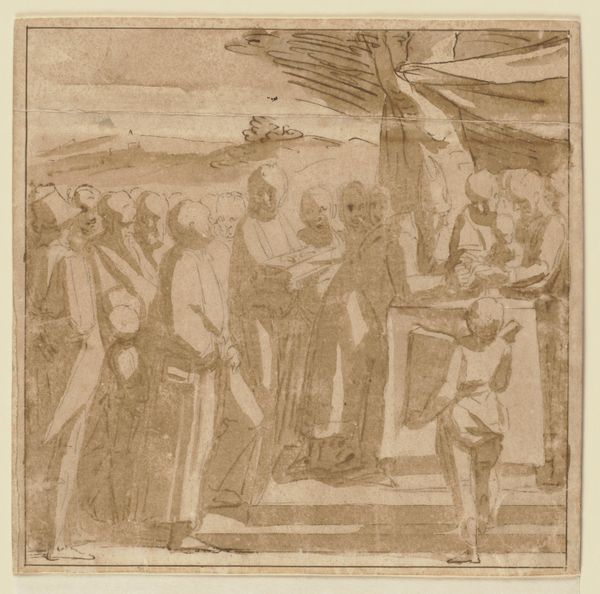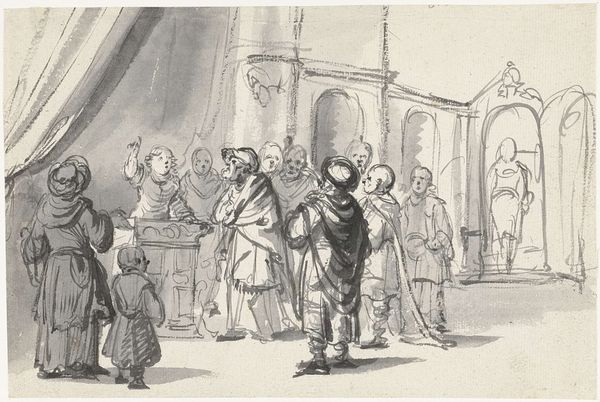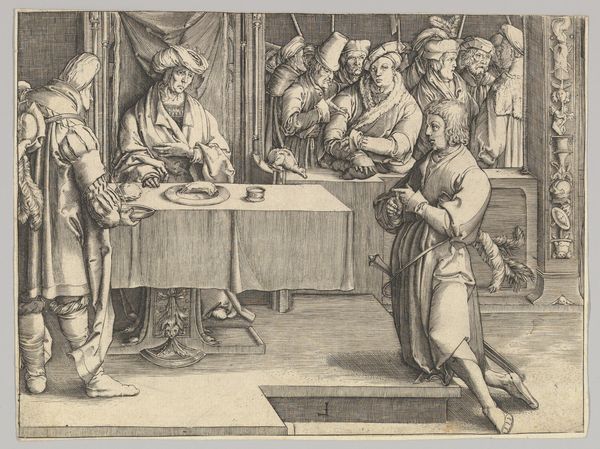
drawing, ink
#
pencil drawn
#
drawing
#
16_19th-century
#
narrative-art
#
pencil sketch
#
figuration
#
ink
#
pencil drawing
#
romanticism
#
portrait drawing
#
history-painting
Copyright: Public Domain
Curator: Immediately, the somber atmosphere is striking; it's heavy with a sense of shame and guilt. The use of delicate ink lines conveys a subdued emotionality, appropriate to a penitential theme. Editor: Here we have "Nathan's Penitential Sermon," a drawing made around 1850 by Julius Schnorr von Carolsfeld. It depicts a scene from the Hebrew Bible, specifically 2 Samuel 12, where the prophet Nathan confronts King David about his sin with Bathsheba. Curator: Considering the historical context, Carolsfeld, a Nazarene painter, would certainly have approached this biblical narrative with the goal of instilling moral and religious values. His choice of drawing over a grander medium perhaps implies an intention for personal contemplation rather than public display. Editor: The choice of materials is intriguing, isn’t it? It’s primarily executed in pencil and ink, which invites close inspection of the craft. The cross-hatching creates the dramatic shading and volume and conveys texture and depth. Do you think that choice of this simple medium, allows the image to disseminate easier, especially given printmaking technologies of the period? Curator: Absolutely! The reproductive capabilities inherent in drawings intended for prints would extend the work's influence far beyond the gallery or collector's walls. It democratizes access to art with this theme. Think about how this drawing will enter into various printed material available during that time! Editor: Notice too how the composition emphasizes the power dynamic. Nathan stands tall, accusing, with vivid representations of David's sins rendered as visions in the background. David, in contrast, bows deeply, burdened by his actions. These choices are important as they place guilt, shame and atonement on a stage that serves as a public example of right versus wrong behavior for its intended contemporary audience. Curator: It certainly is an examination of morality and authority in 19th-century society. A reflection on accountability perhaps, considering the increasing role of the press at the time? Editor: Indeed. What starts as a moment of intense spiritual reflection morphs into something much more social and even political in nature when you look closely at the image’s dissemination potential and themes related to press and power. Curator: Looking closely, the skill is evident but also the possibilities inherent within that material—of easily made copies, for instruction and inspiration.
Comments
No comments
Be the first to comment and join the conversation on the ultimate creative platform.

